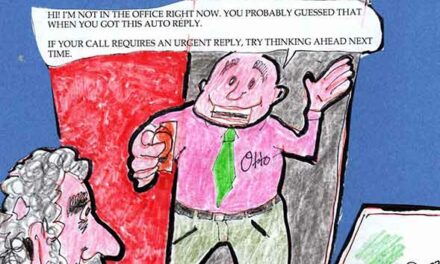The “Sugar High” Gets Re-Debunked. To Which I Say, “Bunk!”
Colorado Doc Backs up 1994 Study
By Ed Goldman
The issue of sugar highs re-emerged in a recent “Ask Well” column in the weekly science section of the New York Times. It prompted Richard Klasco, M.D., an emergency medicine doc in Englewood, Colorado, to re-debunk the notion that there’s a medical basis for “sugar highs.”
“While thoroughly refuted, the theory of the sugar high endures as a topic of ongoing investigation,” he wrote. “But the results of these investigations continue to show that sugar does not affect children’s behavior.”
What does this teach us?
1. Medical science does not have a six-year-old child.
2. Medical science has never spent the night in my home after I yielded to a dinner date, host or waitperson who’d implored me to “try just a few bites of this maaaarvelous Chocolate Decadence cake.” They’re the ones I ended up phoning at 3:30 a.m. to thank them for my pulse-racing (but maaaarvelous) insomnia.
I have a couple of theories about this, of course. A columnist always has to have theories. It’s in the job description, right before “other duties as assigned” and “must be obnoxious, though not every single time the column appears. Readers need a break.”
Theory A: Since Dr. Klasco practices in Colorado, it’s possible that any highs attributable to sugar or to that state—made popular by the 1972 song “Rocky Mountain High,” written by John Denver and Mike Taylor, and performed by Denver—are clouding the research.
Theory B: Maybe the doctor doesn’t believe in Rocky Mountain highs, either. After all, Englewood is more than an hour’s drive from Colorado Springs, generally considered the gateway to the Rockies. The town’s elevation is more than a mile; ergo it’s where you’d pretty much expect to experience a Rocky Mountain high. (For new readers: I try to use the word “ergo” whenever the word “science” is mentioned in my column. It’s so much less confusing than “to the contrary notwithstanding” and a little less lisp provoking than “thus.”)
My beloved, Kim—whom I met in the 10th grade 55 years ago, and, more to the point, who taught 1st grade for 24 years in a Long Beach, California elementary school—just isn’t buying it.
“Med science is wrong re sugar highs,” she says. “Ask any elementary school teacher. Better yet, spend a day in a primary class after Halloween, a holiday educators are hoping will be permanently moved to the last Saturday in October. Guess why?” (Oh, I know! I know! Call on me!)
“But I will add,” she says, that “there follows a sugar LOW. And either condition renders learning impossible.”
Maybe researchers should train their sights less on children’s consumption of sugar than on their anticipation of consuming it.
Ed Goldman's column appears almost every Monday, Wednesday and Friday. A former daily columnist for the Sacramento Business Journal, as well as monthly columnist for Sacramento Magazine and Comstock’s Business Magazine, he’s the author of five books, two plays and one musical (so far).




